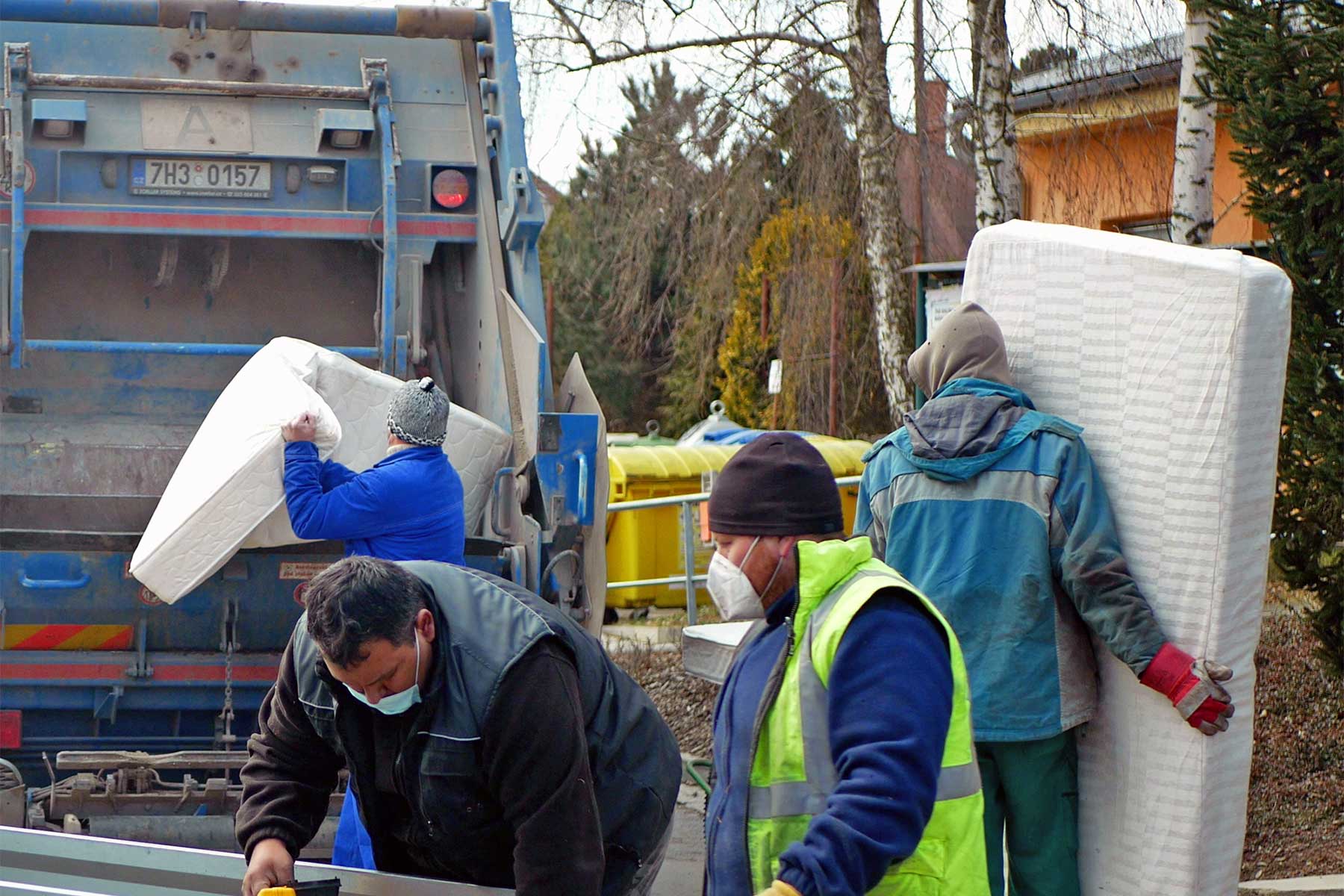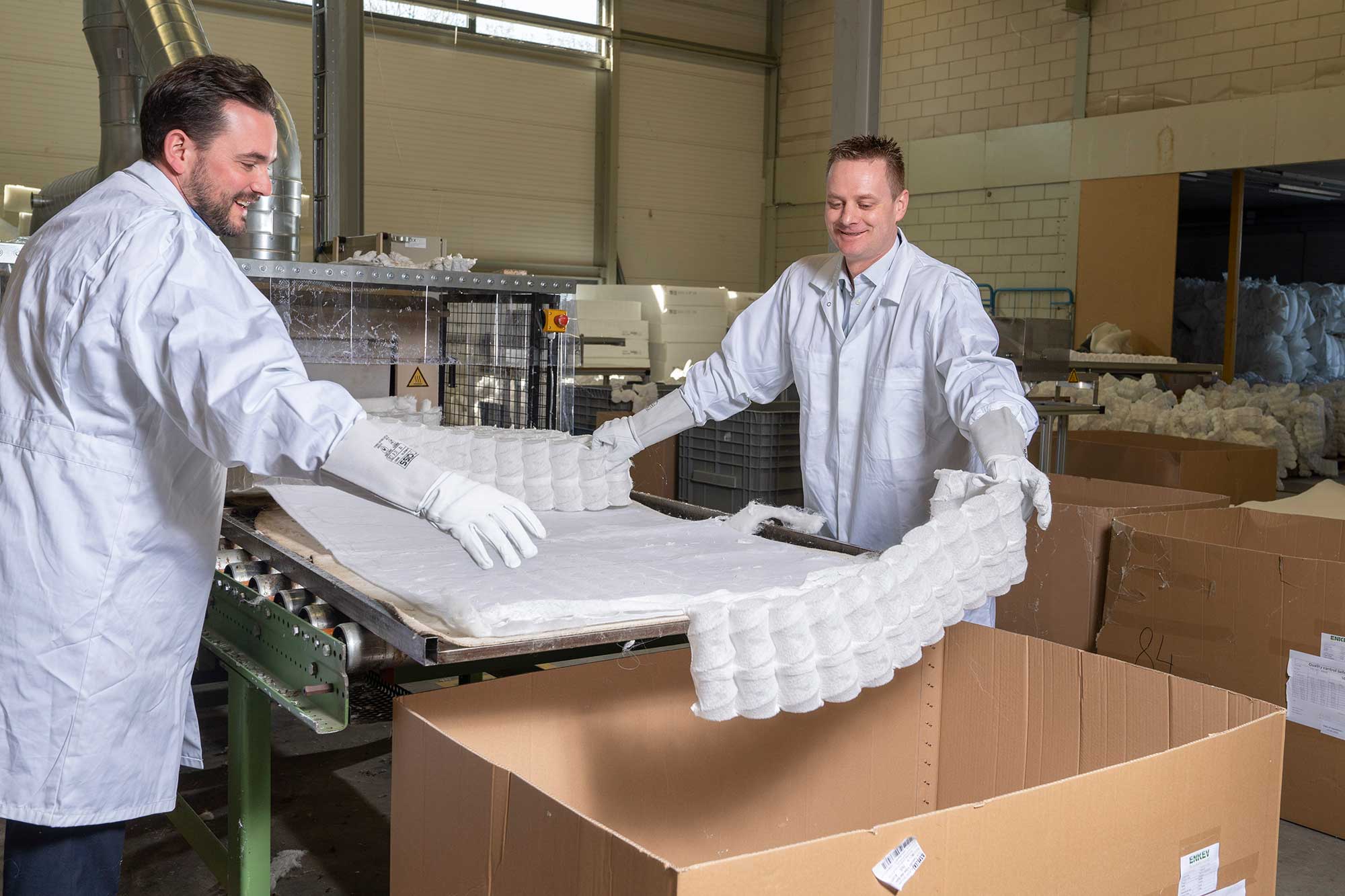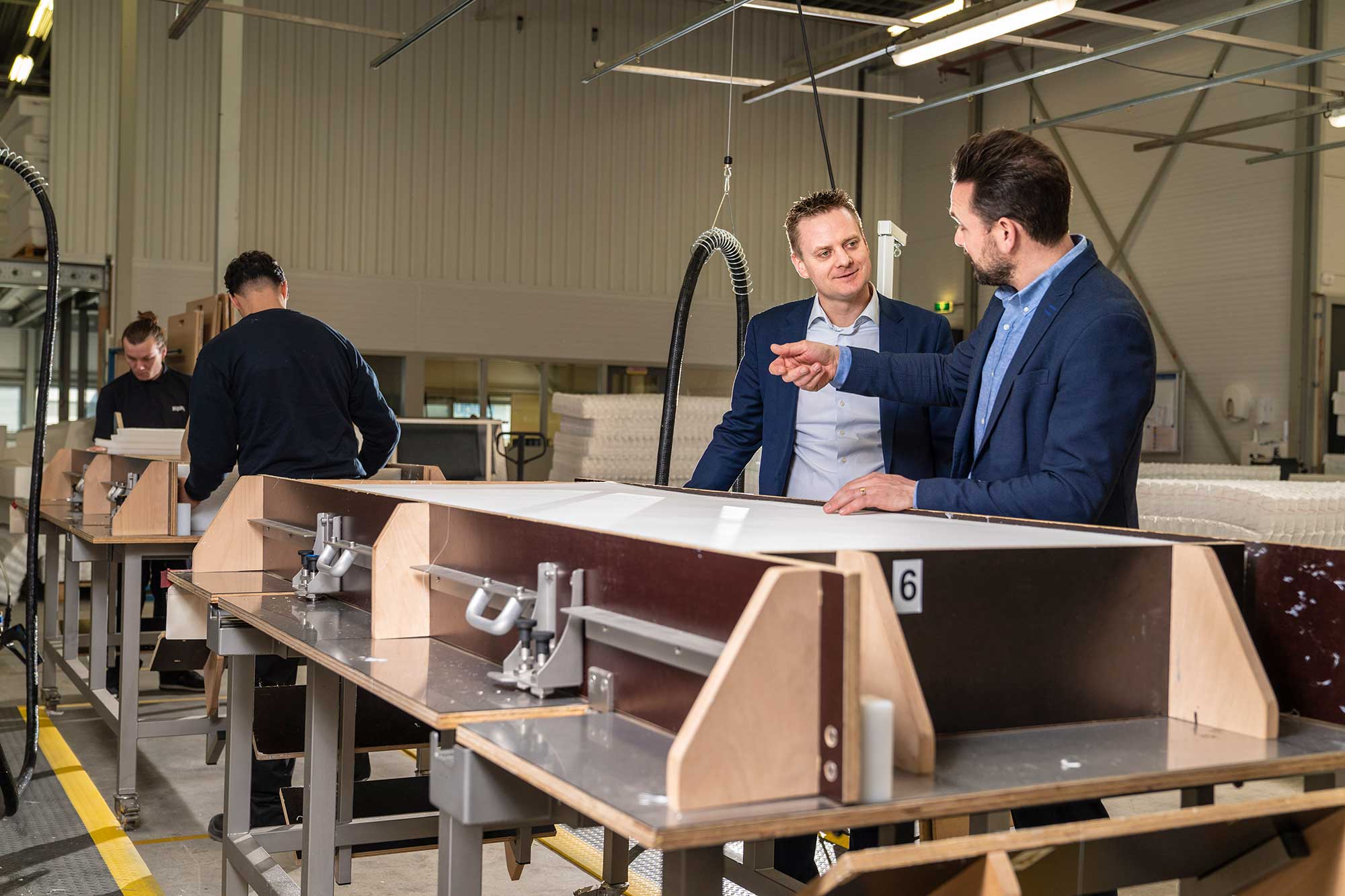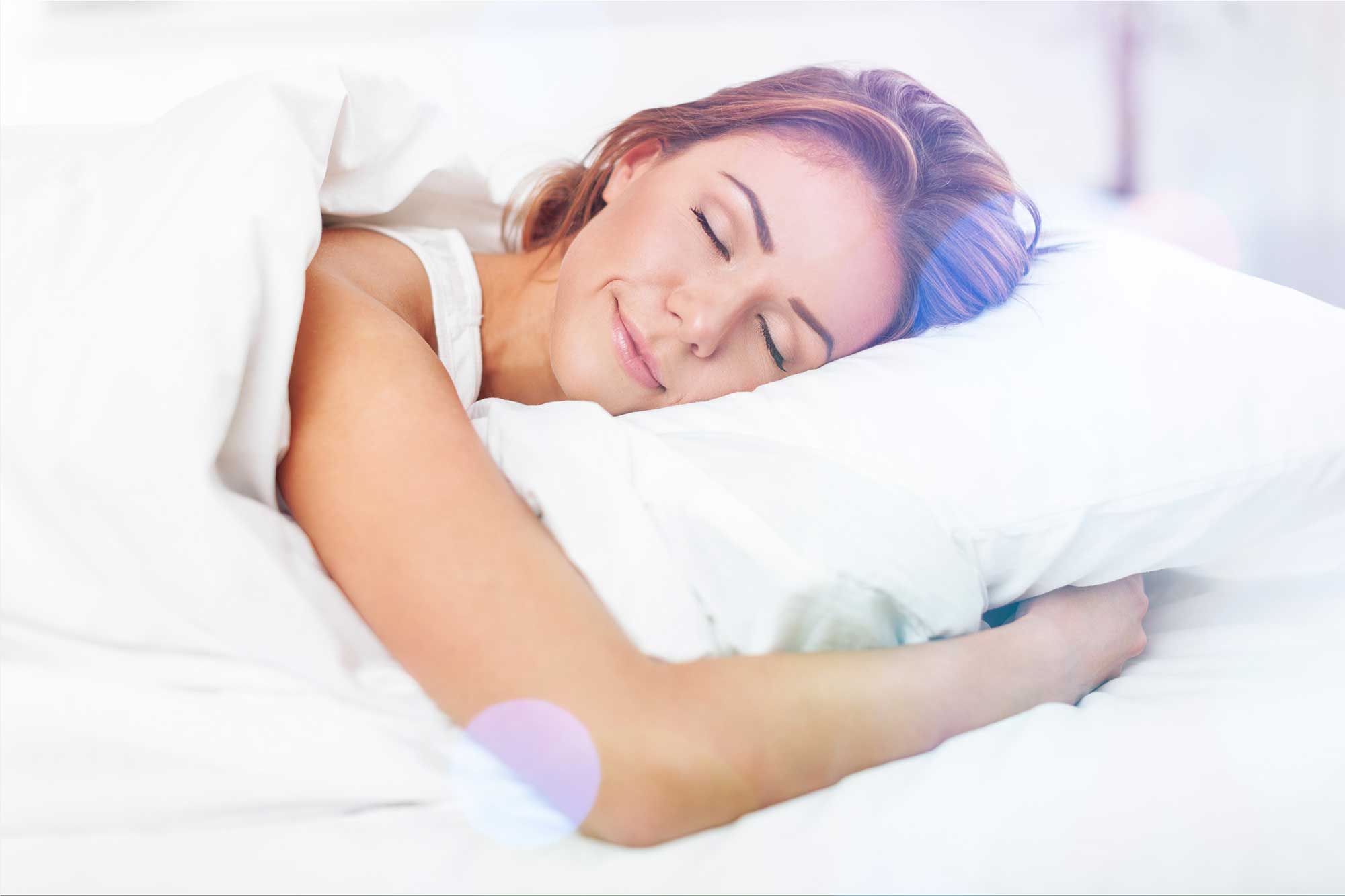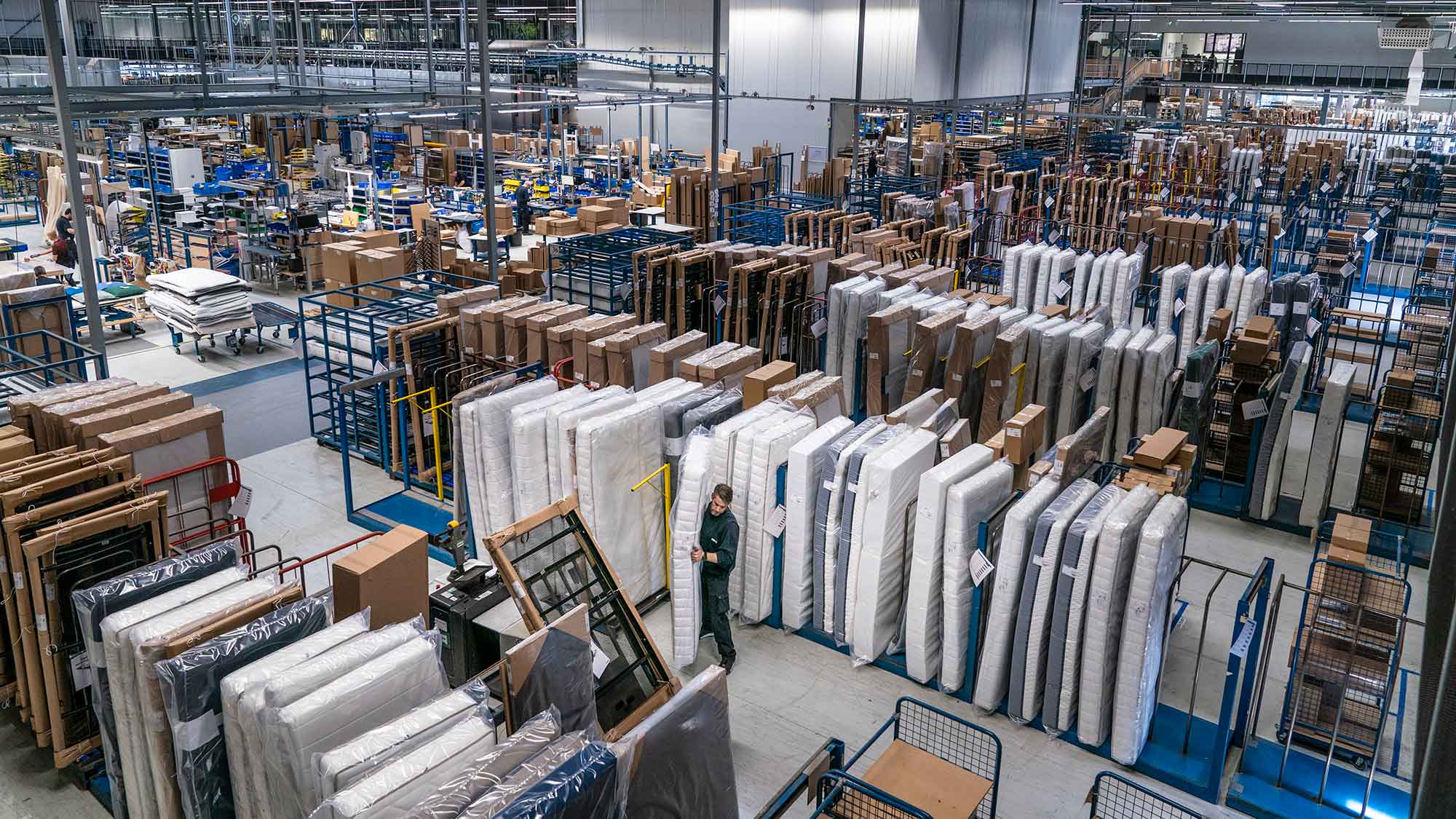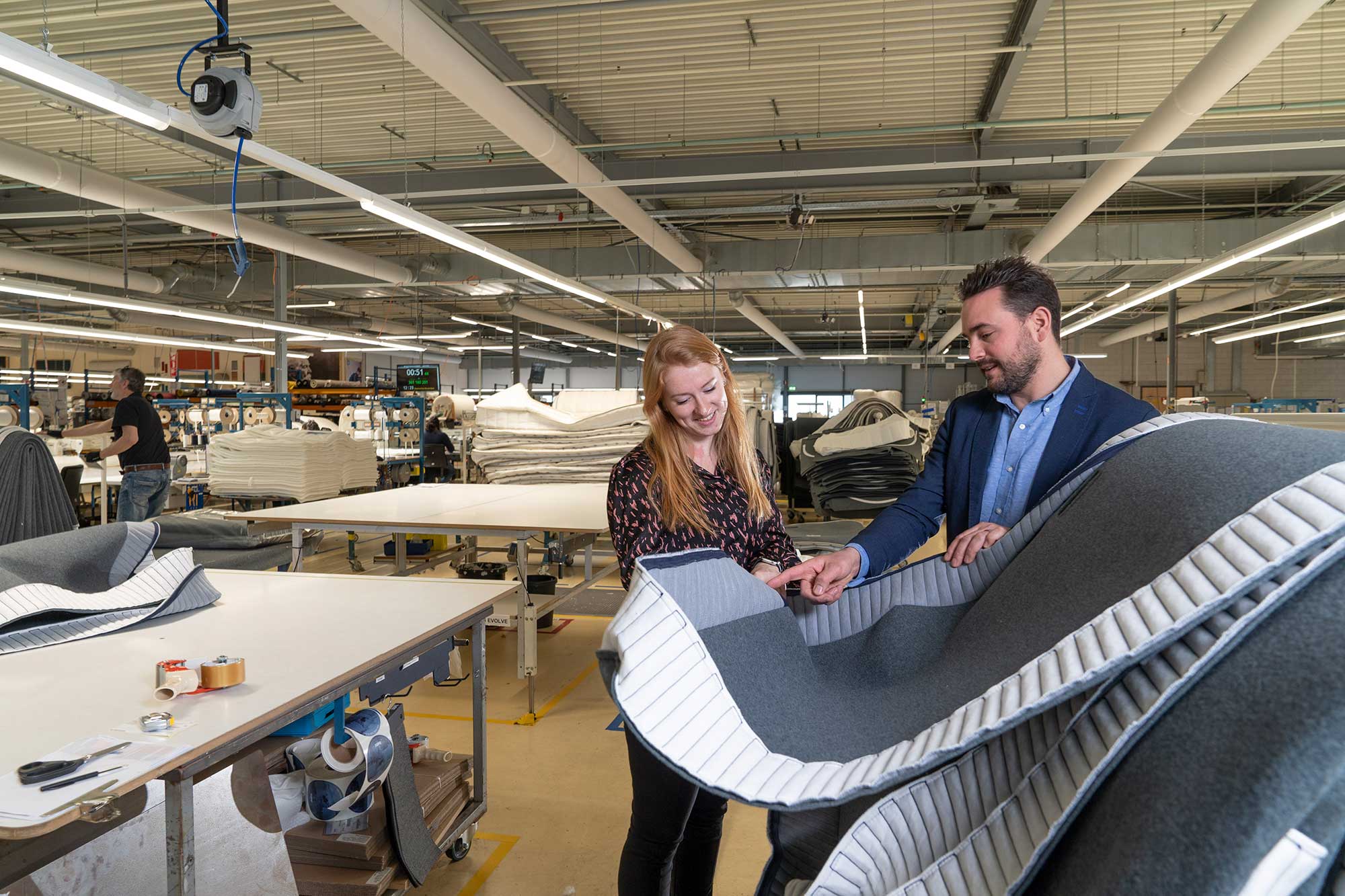In this circular transition, the two best-selling conventional Auping mattresses will be replaced by a new generation of circular mattresses in May 2022. Together, these two are currently responsible for 50% of turnover. It is a mega-operation, involving many organisations and with Auping sticking out its neck as a front runner. ASQA Subsidies’ network proved useful in this endeavour.
“The idea for a circular mattress originated with us as early as 2010,” says Wouter Dijkman, R&D manager at Auping. In that year, Auping appointed a sustainability manager and since then all products have been tested against the cradle-to-cradle philosophy. Mattresses didn’t score very well on this test because they were difficult to recycle. Dijkman: “That had to do with the PU foam used and the way the materials were glued together. We then started looking for alternatives, such as bio-based materials. Initially, that was not a success, because they decomposed too quickly in the sleeping climate of 37°C and moisture. We can adjust these properties with additives, but this compromises the recyclability. That is why we finally opted for polyester as a raw material for our new generation of mattresses. It is easy to recycle and of high quality; just look at the way PET bottles are collected. Especially now that we have bonded it with Niaga® polyester adhesive. As a result, our entire circular mattress consists of just two materials: two variants of polyester and steel springs.”
Closing the business case was not easy. For example, the planned new production line for circular mattresses will cost several million euros. Material costs are also high. Passing these costs on to consumers is impossible, because they are often not prepared to pay extra for sustainability, of which they hardly notice the difference in practice. Only an increase in scale can reduce the cost price.
However, with an annual production of 100,000 mattresses, the volumes are still too low. That is why Auping, in cooperation with Covestro-Niaga, is taking a remarkable step: sharing the technology with competitors. “In addition to the Niaga team, we have even set up a business development department within Auping that actively approaches our competitors to interest them in our circular invention,” says Dijkman. “A number of contracts have now been signed with international companies, both mattress makers and mattress sellers. They ensure that our initiative is also taken up in other countries. This is how the system change gets underway.”
Distinctive
In order to ensure that it can still stand out, Auping is also innovating the customer approach at the same time as the production technology by means of the so-called body type system. “At the moment, a consumer wanting to buy a mattress can try it out in the shop on a number of standard mattresses. This quickly narrows down the range to five different types of mattress supports. The salesperson estimates which mattress is most suitable. Often, the options also have different price levels. That doesn’t make it easy for a consumer to go home with the right mattress. This is reflected in the number of mattresses returned under the Exchange Guarantee. Thankfully, this is relatively small for Auping, but for web shops the numbers are substantial. So these are new mattresses that are immediately turned into waste, and that is something you really shouldn’t want! Years of research into supports and thousands of body scans have shown that as many as 12,960 different types of mattress are needed to provide 95% of people with the right support. We ensure that you sleep with your back straight, so that it recovers well during the night and you wake up feeling well rested. If we are to manufacture all these mattress variants, we need real product and production innovation.”
In the current bed and mattress factory, the assembly of the circular body type mattress is still done manually. In the new factory that will be built for circular mattress production in the future, the assembly of the mattress core will be fully automated. Robots will first bring the pocket springs and materials of all variants to the right size in the automatic production line. Then the mattress parts will be positioned correctly and glued together horizontally or vertically.
After assembly, the circular body type mattress is measured one more time per zone to check whether it really has the right hardness and resilience. Mattresses with an incorrect composition can thus be set aside so that the customer order can immediately go back into production. “This gives us a degree of control over quality that is unprecedented in the mattress market. That is our unique proposition. We will soon be able to produce all 12,960 circular mattress variants in a customer-controlled manner. This will set us apart from our competitors, while allowing us to take our responsibility to take steps towards making the entire industry circular.”
Subsidy
Even then, large investments are needed. At the same time, a complete circular chain must be set up to enable the collection of old mattresses, separation of the materials, reuse, recycling and new production of the circular mattresses. Auping has applied for subsidies for this purpose on a number of occasions, but each time they were unsuccessful. Translating innovative plans into concrete, feasible projects proved to be quite a challenge.
Through Foamplant, a Dutch company that produces sustainable and circular foams, Auping came into contact with Klaas Zijlstra, director of ASQA Subsidies. He stepped into the project as a venture capitalist and later also involved the University of Groningen and chemical recycling company CuRe Technology (‘polyester rejuvenation’) in Auping’s circular transition. “We started together in 2019,” says Zijlstra. “Foamplant was developing a production technology to make sheets of biodegradable foam for use in furniture and mattresses. Initially, this was a material innovation at lab level, for which a TSE Industry grant was awarded by RVO for the project ‘Closing the Loop-Dreaming towards a circular foam industry’. Foamplant and Auping then wanted to go a step further and realise the entire circular chain from production to recycling of these sustainable and circular sheets at pilot level as well. This meant that the bio-polyester sheets from Foamplant could actually be used by Auping in the circular mattresses and could be processed into reusable granules at the end of the mattresses’ lifespan, making it possible for Foamplant to turn them into circular foams as a sustainable alternative to PU foams for technical applications in the furniture industry. Auping has thus demonstrated that the next step towards a fully circular company with a closed-loop mattress recycling system can be taken, in which the biodegradable foams from Foamplant are also recycled again. The Northern Netherlands Cooperation Agency (SNN) awarded an ERDF grant for the ‘Closed-loop furniture biofoam recycling’ project.”
Two other innovation projects were subsequently added. “The most important is the establishment of a production chain on a commercial scale for the current concept of circular mattresses. The fact that Auping is going to assemble the circular mattresses robotically in a new pilot production line is important for the company’s circular transition. CuRe Technology and Auping will ensure that the old mattresses can be recycled partly mechanically and partly chemically. “For CuRe Technology, this collaboration is also an important step forward. Textile to textile recycling is a solution that we desperately need in order to combat plastic pollution and climate change. The cooperation with Auping is an impactful first step that will teach us a lot, and from which we can continue to grow,” said Josse Kunst, chief commercial officer of CuRe Technology. In addition, Texperium will process the recycled polyester granulate into pile fibres and make the yarns suitable for application in mattress and bed textiles.
The requested and approved subsidy application was initially rejected after a drawing of lots. After a six-month delay, the proposal was resubmitted within the 2nd tranche REACT-EU 2021 OP Oost 2014-2020 and a grant of € 3.58 million was awarded to the project by Auping, CuRe Technology and Texperium. Finally, a DEI+ subsidy from RVO has been granted for a fourth project in which Auping, together with Foamplant, is working on a pilot line that will enable closed-loop biopolyester furniture foam recycling. The pilot line will be equipped to recycle all furniture foams against the quality requirements of Auping. For this purpose, the DEI+ project will validate that the circular furniture foams can be used in the headboards as an alternative to polyester/polypropylene mix fleece and polyurethane foam. For Foamplant, this last project means a big step into the extensive market of furniture foams.
Circular polyester textile
Auping will start the commercial production and recycling of circular polyester mattresses after the end of the subsidy project. The raw materials from the polyester mattresses returned from the recycling centres will be used to make new circular mattresses. After inspection, metal pocket springs can go straight back into production, while the polyester material is brought back to the desired quality by CuRe Technology. Despite the fact that this is a relatively small waste flow, the Emmen company is investing in a recycling line for textiles. In addition to the circular mattress, other polyester textile streams can then also be recycled. “There is enormous potential there,” says Zijlstra. “Roughly speaking, one third of the global polyester market consists of polyester packaging and two thirds of polyester textile combinations. The latter is a complex flow because the polyester is often used in alternating blends with cotton. This concerns gigantic material flows for which there is no good end-of-life solution worldwide. CuRe Technology has the technology to offer this solution for various industries. Think of the recycling of rolls of carpet, decorative blinds, clothing, mattress fabrics, window coverings and the stuffing of quilts.
Developing chains
“Only when we saw the project bigger as a way to make the world a lot more sustainable together with others did the subsidies come within reach,” says Wouter Dijkman. “Many entrepreneurs have difficulty overseeing the steps that are necessary to achieve this. So you need good guidance. Klaas Zijlstra played an important role in this process. He encouraged us to think bigger and to work with the right organisations. We also had contacts with CuRe Technology in the past, but we always found that our volumes were too small for them. Now that we are tackling it this intricate way, we can both benefit from this process. Together, we can realise the recycling of polyester mattresses, bedding and bedroom textiles in controlled closed chains. As a result, our circular mattress is no longer a dream, but recycling really becomes a reality.”
“It is clear that circular enterprise is more than a material or product innovation,” says Klaas Zijlstra. “It is crucial that you should also be able to develop those circular chains in collaboration with other organisations. You have to consider what the right consortium is to set up a programme, what the ideas behind it are and what the story is that you want to tell. Often people tend to keep it too small, too limited and too close to themselves. They don’t see the relevance of the complete story, even though it is innovative and unique. As a consultant, you sometimes have to act as a kind of anthropologist, get to the heart of the matter and make connections with other companies working on similar issues. Together you are stronger, not only in terms of getting subsidies, but also in realising your plans.”
This article was created in cooperation with ASQA Subsidies.

